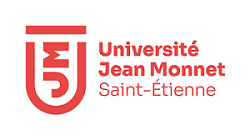The Opposite Effects of the Heating Rate on the TSL Sensitivity of Ge-doped Fiber and TLD500 Dosimeters
Résumé
One of the main criteria for choosing a thermoluminescent dosimeter (TLD) is its sensitivity to the radiations under investigation. Increasing the heating rate during readout often appears necessary to reduce the time between the measurements and the dose evaluation, especially in routine dosimetry. However, doing this degrades the radiation sensitivity of common dosimeters, as illustrated in this work for the TLD500 dosimeter. It is shown that the germanium-doped optical fiber (GDF) is not only more sensitive to radiation than these COTS dosimeters but, unlike them, its sensitivity is enhanced when the heating rate increases. The physical origin of this rare effect of sensitivity enhancement is probably due to the temperature dependence of the recombination rate by which the detrapped electrons upon stimulation are transferred to the luminescent centers. The effect of light exposure on the dose information stored in both GDF and a commercial TLD is also reported

